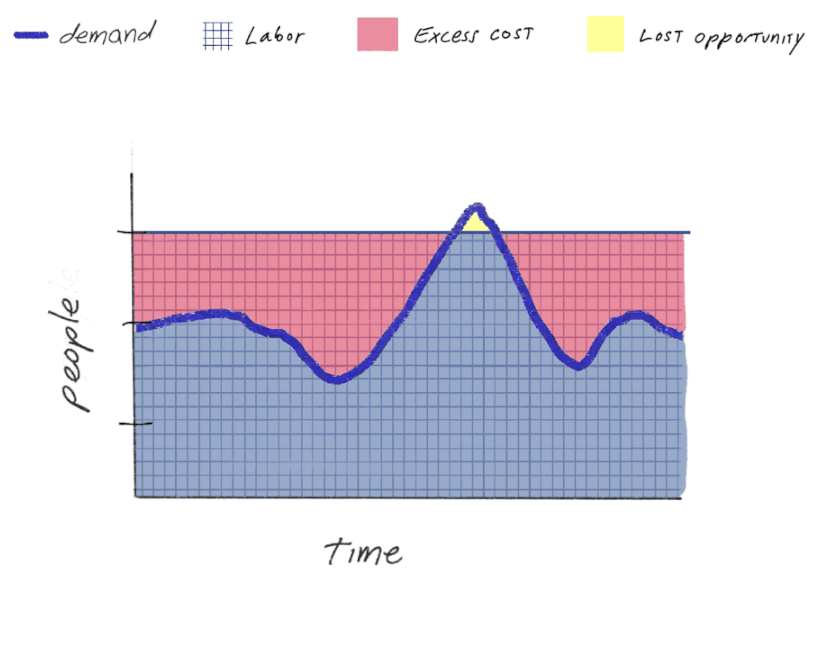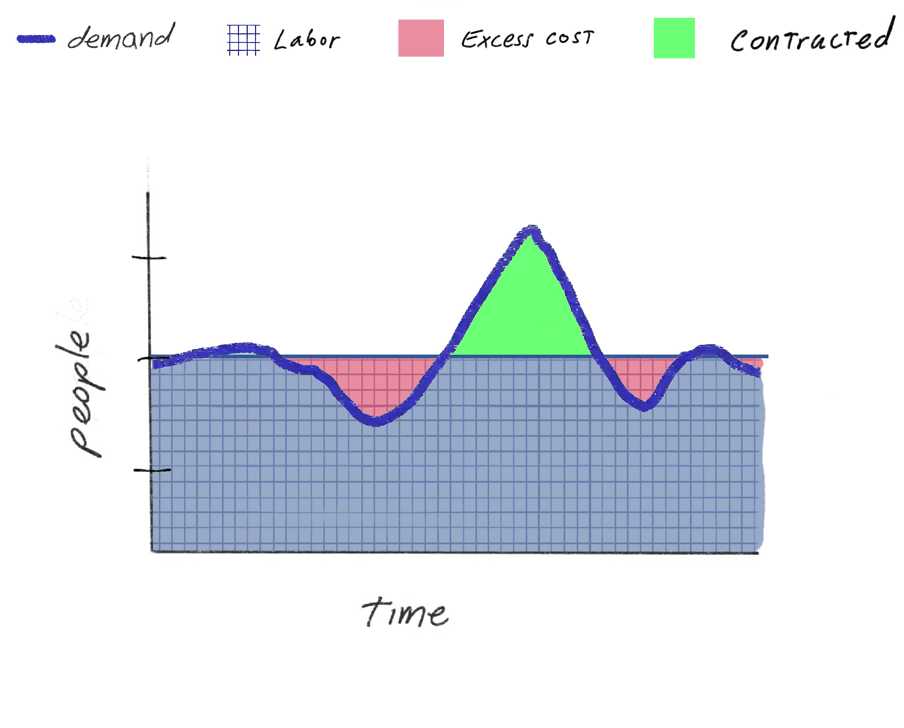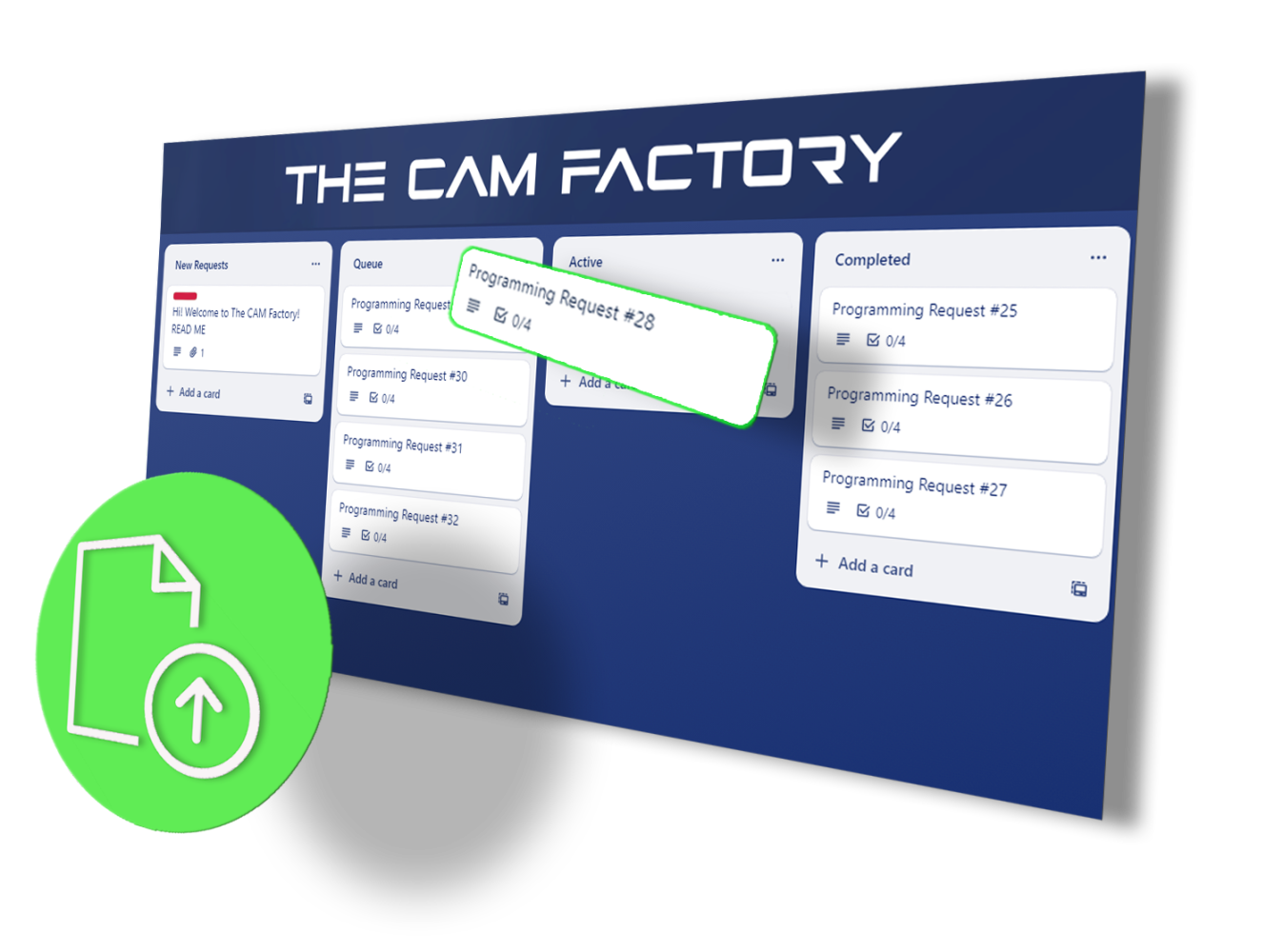
Small machine shops with few employees and limited capacity face disproportionate troubles in the face of demand variability compared to their larger counterparts. This is due to the relationship between total resource hours and average hours per job. The fewer the resources, the larger the impact of each job.

For comparison's sake, let's say a shop has 100 hours of resource capacity and the average job takes 10 hours.

The total number of jobs that can be completed in this time period is 10. If the incoming work swings up and down by two jobs, this is effectively a 40% swing in demand.
If we apply the same numbers to a shop with 5x the capacity, we get:

The same swing in demand amounts to just 8% for this shop. Much easier to manage.
The actual effect of such a small fluctuation in demand amounts to incredible challenges for a small shop when it comes to planning for growth; hiring employees, investing in equipment and managing cash flow.
I'm a visual person, so I spent way too much time creating these GIFs to help illustrate the burden a small shop experiences while growing.

In this first GIF, we see that the shop is fairly efficient, but still experiences significant dips regularly. They're also missing out on a lot of work. Let's say they add one more employee to capture the work they've been losing out on.

With one additional employee, one could manage to capture almost all of the work, but at a huge expense. The top line revenue gains don't make up for the excess expenses. This creates more pressure on sales and the wheel keeps spinning. Keep in mind, in a small machine shop, the sales team is usually one person—the owner.
It's a chicken and egg situation. Do you hire an employee before you have the numbers to justify it? How can you get the sales to justify a hire before you have the capacity? The scenario above is usually the answer. Hire, burn cash and try to sell.
But what if you could get the best of both worlds? You keep your full-time team lean, focused on the day to day operations, and contract out portions of the work while capturing most of the profits. That would look something like this:

It's the same as the first scenario, except, instead of losing out on work, you contract out parts of the process and optimize your internal resources to handle the work that has to be done in-house. By contracting out portions of the workload, you still capture the majority of the profits without straining your operation.
Let's break down the end-to-end process of a machined part post-sale to see what makes sense to outsource.
First, let's eliminate options that don't make sense to subcontract. I would eliminate material procurement and all aspects that have to do with the actual manufacturing of the parts. This includes machine setup through QC. Outsourcing these aspects is essentially giving away the whole job and the margins don't justify the effort and responsibility.
But outsourcing CAM programming is a viable option. This is typically a large percentage of the workload for prototype jobs and it's the only portion that can be done from anywhere, any time.
I've experienced this pain point while working in a shop with only two machines and two machinists. Our machines sat idle while we programmed parts. The small quantity orders made it difficult to get ahead on programming the next part. The cycle continued. After talking with other small machine shop owners, I learned that this problem is common. So, I put together a solution and started working with them to maximize their revenue while optimizing their spending.
Enter, The CAM Factory.

By working with an on-demand remote programming service like The CAM Factory, you have the ability to expand capacity as needed. And getting programs is as easy as ordering takeout. Upload requests to your online dashboard and wait for the notification that you're programs are complete. Hourly packages are available for an affordable rate and never expire.
Planning for growth in face of fluctuating demand can be extremely difficult to navigate as a small machine shop owner. Creatively capturing revenue by maximizing your internal resources and utilizing external resources can help get you to the next level without the growing pains.
If you're interested in learning more about The CAM Factory and how we can help change the way your team gets to cutting, schedule a call with me here.
